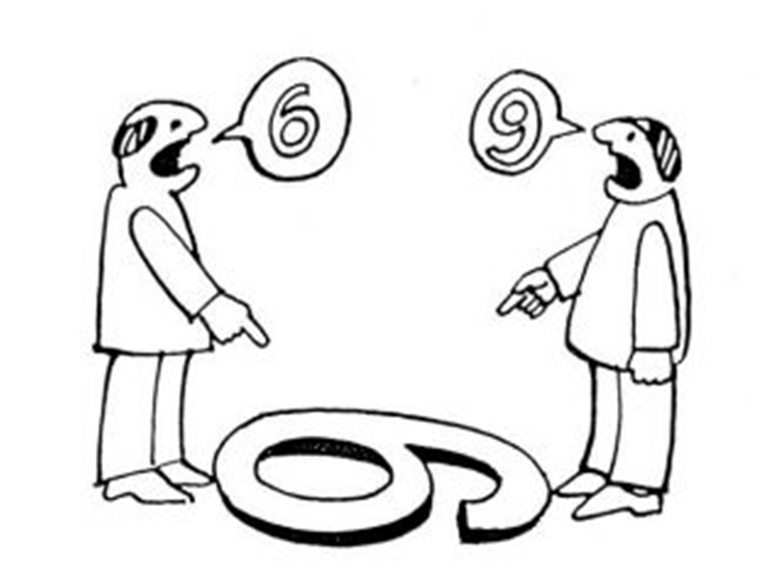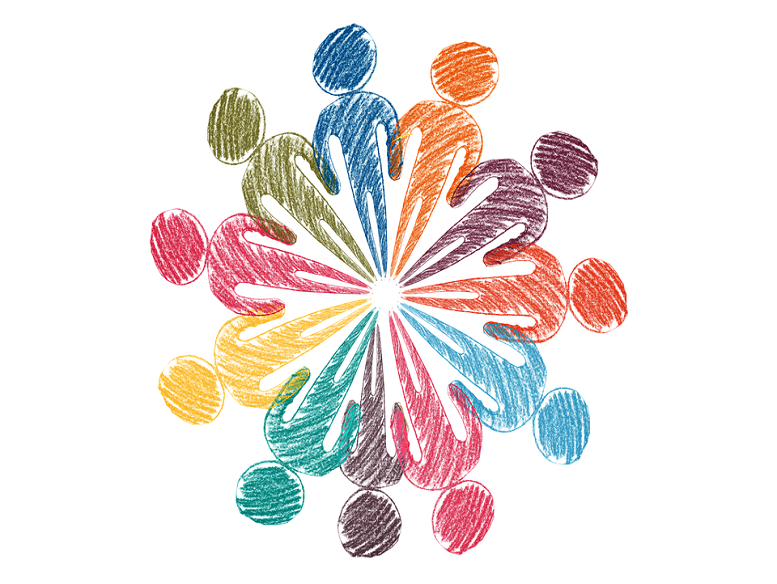There’s a cartoon about perception that I use in one of my leadership development workshops. It has two men standing at opposite ends of a number – one at the top, and one at the bottom. One man points to the number says “six.” The other man points to the number and says, “nine.” Who’s right?
It’s all a matter of perspective.
Think about the last time you had a heated discussion with someone. (Given our current political climate, this shouldn’t be much of a stretch. Hence the reason I’m covering this topic!) Did you stay firmly rooted on your side “of the number,” or did you pause to walk around to the other side to try to look at it a bit differently? It’s hard, I know. We each live in a world of beliefs we’ve developed based on what we’ve observed, learned and experienced over our lifetime. Yet it’s worth the effort.
In his book, The Fifth Discipline: The Art and Practice of the Learning Organization, Peter Senge talks about the Ladder of Inference, which describes the thinking process we go through – usually subconsciously – to get from a fact to a decision or action. Visualize a ladder. Starting with reality and facts at the bottom of the ladder and then moving upward, we:
• Select from the facts based on our beliefs and prior experience
• Interpret what they mean
• Apply our existing assumptions, sometimes without validating them
• Draw conclusions based on how we interpreted the facts and our assumptions
• Develop beliefs based on our conclusions
• Take actions and form opinions that seem “right’ because they are based on what we believe
When we do this on a regular basis, we become so stuck in our thinking that we find it nearly impossible to consider a new, different or more collaborative way of looking at things.
I’d like to suggest that in the interest of more effective dialogues, better relationships and enhanced personal wellness, we all make the effort to get unstuck. All too often conversations are shut down because opinions vary, and no one wants to risk their stance by probing for a deeper understanding of someone else’s.
Here’s what you can do. Stop. Look. Listen.
Stop. Before you go scrambling up your perception ladder, stop for a minute to evaluate your thought process. Do you have all the facts? Is their source reliable? Are you making assumptions about the facts – or the other person – without validating them?
Look. Look for opportunities to learn about views different from your own. Observe different approaches to doing things. Even simple things, like making coffee, writing a report, conducting a meeting, painting a room. Being open to diverse opinions and approaches helps us understand that different is not necessarily wrong.
Listen. Turn down the heat when opinions differ by expressing an interest in why the other person believes as they do. Ask the question and then really listen to the answer. Be open to looking at the issue slightly differently once you’ve heard the reasoning behind their point of view.
The experience may change your opinion, or not. Or it may strengthen and validate it. Either way, you will have learned something.
“What you see depends not only on what you look at, but where you look from.” – James Deacon









